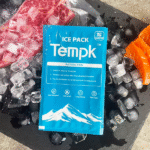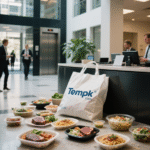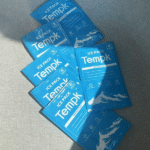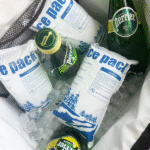As biologics, vaccines and cell therapies become mainstream, ال pharma cold chain logistics services that keep them viable have never been more vital. You might assume cold storage is just about refrigeration, yet it involves a sophisticated web of packaging, real time monitoring and compliance protocols. في 2024 the pharmaceutical cold chain market was worth US$18.61 billion and is predicted to reach over US$27 billion by 2033, reflecting growing reliance on temperature controlled distribution. This guide shows you how to navigate the 2025 landscape, from maintaining temperature integrity to implementing digital innovations and sustainability.

What pharmaceutical cold chain logistics services include and why they matter, using market size and definitions as context.
How to protect biologics and vaccines using temperature integrity and risk management, supported by real world data on vaccine wastage.
Which technologies—IoT, blockchain, AI and cryogenic solutions—are reshaping the cold chain, and how they boost visibility and efficiency.
Best practices for GDP compliant packaging, monitoring and partnerships, with guidance on avoiding regulatory pitfalls.
Sustainability trends and regional opportunities for 2025 وما وراءها, including market forecasts and green innovations.
What Are Pharmaceutical Cold Chain Logistics Services?
Pharmaceutical cold chain logistics services encompass the end to end management of temperature sensitive products—from manufacturing to the moment they reach patients. According to industry definitions, the cold chain covers “planning, معدات, مرافق, and actions required to maintain product quality from point of manufacture to point of use”. The sector’s value was about US$18.61 billion in 2024 and is projected to grow to US$27.11 billion by 2033 في أ 4.3 % CAGR. This growth reflects the increasing share of biologics, which already make up roughly 30 % of approved drugs.
You might picture refrigerated trucks, but pharma cold chain services also include specialized warehousing, cryogenic freezers for cell and gene therapies, التعبئة والتغليف المعتمدة, مراقبة في الوقت الحقيقي, compliance documentation and contingency planning. The European Medicines Agency’s Good Distribution Practice (الناتج المحلي الإجمالي) regulations require distributors to guarantee that medicines are stored and transported under the right conditions, with robust traceability and recall systems. في 2025 the healthcare cold chain logistics market is estimated at US$65.14 billion and is forecast to reach US$137.13 billion by 2034, showing the broad healthcare demand for vaccines, البيولوجيا, blood products and diagnostic specimens.
Differentiating pharma from general cold chain
| وجه | General cold chain | Pharma cold chain | ماذا يعني لك |
| منتجات | طعام, ألبان, زهور | اللقاحات, البيولوجيا, خلية & العلاجات الجينية | Higher stakes—quality failures harm patients rather than spoil meals |
| Temperature ranges | مبردة (2-8 درجة مئوية), المجمدة (–18 to –25 °C) | مبردة (2-8 درجة مئوية), المجمدة (-20 درجة مئوية), مجمدة بعمق (-70 درجة مئوية), المبردة (–150 °C to –196 °C) | You must match packaging and equipment to each range to avoid degradation |
| أنظمة | Food safety rules | الناتج المحلي الإجمالي, ممارسات التصنيع الجيدة, نيست & UKAS calibration, لائحة التجارب السريرية في الاتحاد الأوروبي | Compliance is stricter; documentation and audits are mandatory |
| Infrastructure | Warehouses and retail facilities | Qualified warehouses, temperature mapped transport routes, التعبئة والتغليف المتخصصة | Partner with a 3PL that understands pharma requirements |
نصائح وتوصيات عملية
Assess product profiles early: Identify whether your products require +2 درجة مئوية إلى +8 °C refrigerated storage, –20 °C freezing or –70 °C or lower cryogenic conditions. This determines packaging and transport requirements.
Choose specialist providers: Work with logistics partners who have validated storage, calibrated monitoring equipment and regulatory experience.
Integrate planning beyond the warehouse: Effective cold chain management considers first and last mile conditions, customs delays and last mile delivery to clinics.
Document and audit: Maintain complete temperature records, deviation reports and calibration certificates to demonstrate compliance with GDP and avoid regulatory penalties.
مثال الحالة: A vaccine distributor shipping to rural clinics in Africa improved on time delivery by partnering with a 3PL that offered real time GPS tracking and buffer stock options. By aligning packaging with local climatic conditions and improving documentation, the distributor reduced temperature excursions by 40 % and avoided product losses.
Why Temperature Integrity Matters in Biologics and Vaccines?
Temperature integrity is the cornerstone of pharmaceutical cold chain logistics. البيولوجيا, vaccines and cell therapies are highly sensitive to temperature fluctuations; even brief deviations can render them ineffective or dangerous. Before the COVID 19 pandemic, حتى 50 % of vaccines were wasted globally due to poor temperature management. In low income regions, فقط 14 % of planned vaccine doses reached recipients because of supply chain failures. These sobering numbers show how far the industry must go.
العلاج بالخلايا والجينات (سي جي تي) intensify the challenge. CGT products often require ultra cold storage at –80 °C or lower, and the CGT market could surpass US$81 billion by 2029. Cryogenic logistics are becoming a major segment: في 2024 cryogenic services held about 31.45 % of the pharma cold chain market share. The Towards Healthcare report estimates that the cell and gene therapy logistics market grew from US$1.89 billion in 2024 to US$2.19 billion in 2025 and will reach US$8.06 billion by 2034. With therapies like CAR T requiring storage between –150 °C and –196 °C, maintaining temperature integrity is not negotiable.
Consequences of temperature excursions
| سيناريو | Impact on product | Impact on you |
| Exposure to temperatures above 8 ° C لللقاحات | Degradation of active ingredients, انخفاض الفاعلية | Patients receive ineffective vaccines; loss of trust and possible health crises |
| Improper freezing of biologics | Protein denaturation, aggregation or breakage of glass vials | Product recalls, financial loss and regulatory sanctions |
| Failure in cryogenic transport | Cell viability loss, therapy becomes non viable | Treatment delays and high replacement costs |
| Lack of documentation | Inability to verify product quality | Regulatory non compliance and reputational damage |
Best practices for temperature integrity
Use validated insulated packaging: Materials such as phase change materials and vacuum insulation panels keep products within desired ranges for extended periods.
تنفيذ المراقبة في الوقت الحقيقي: IoT sensors and data loggers provide continuous temperature data and GPS location, enabling prompt corrective action.
وضع خطط الطوارئ: In case of equipment failure or weather delays, have spare packaging, dry ice or alternative routes ready.
تدريب الموظفين: Ensure your team understands handling procedures, reading of temperature devices and regulatory requirements.
مثال الحالة: A biotechnology company shipping monoclonal antibodies used data loggers and cloud based dashboards to monitor each shipment. When sensors detected a rise above 8 °C due to a traffic delay, the company’s contingency plan directed the carrier to a nearby cold storage facility. The product was saved, and full documentation allowed the client to release the batch without delay.
Innovations and Digitalization Driving Reliability
Emerging technologies are transforming pharma cold chain logistics from reactive to predictive. في جنوب شرق آسيا, innovations such as blockchain ledgers for end to end traceability, وحدات التخزين البارد التي تعمل بالطاقة الشمسية, and IoT sensors that deliver real time temperature and location data are reshaping the industry. AI powered route optimisation tools analyse traffic and weather data to suggest efficient paths, while portable cryogenic freezers maintain –80 °C to –150 °C for biologics and cell therapies. Sustainable packaging solutions using recyclable or biodegradable materials reduce waste and carbon emissions.
Industry reports highlight real world product launches. Sensitech introduced the تيمبتال جيو X in February 2024; this IoT-enabled device provides real time temperature, location and light exposure data. Overhaul released a quality solution in June 2024 that combines risk monitoring with compliance dashboards. في أبريل 2024 CSafe launched a multi use cryogenic dewar with real time tracking. These innovations emphasise how digitalization not only secures product quality but also improves operational efficiency and reduces costs.
The role of data and automation
IoT sensors and telematics provide continuous, granular data, enabling predictive maintenance and real time decision making.
بلوكتشين creates tamper proof records of every handoff, boosting trust and compliance.
AI and machine learning optimise routing, inventory and forecasting, reducing dwell time and energy consumption.
الأتمتة والروبوتات in cold storage facilities address labour shortages and improve throughput by automating picking and retrieval processes.
Tips for adopting digital solutions
ابدأ بالمشاريع التجريبية: Test IoT sensors and dashboards on a few lanes to validate data accuracy and ROI.
دمج الأنظمة: Combine real time monitoring with warehouse management systems and enterprise resource planning for a unified view.
Prioritise cybersecurity: Ensure that data transmitted from sensors is encrypted and that blockchain solutions meet industry standards.
Invest in staff training: Digital tools are only effective if your team knows how to interpret data and respond quickly.
مثال الحالة: A global vaccine manufacturer implemented AI driven route optimisation that considered traffic, weather and cold storage availability. Travel times were reduced by 12 %, and energy consumption dropped by 15 %. The company also adopted blockchain for shipment records, which improved traceability and reduced disputes over product condition at delivery.
Best Practices for GDP Compliant Cold Chain Logistics
Regulatory compliance is non negotiable in pharmaceutical logistics. The EMA’s GDP guidelines and their equivalents worldwide set minimum standards for distribution. These standards require temperature control, المعدات المؤهلة, المراقبة المستمرة, risk management and personnel training. Failing to comply can lead to product recalls, penalties and reputational damage.
Core GDP principles and how to implement them
التحكم في درجة الحرارة: Keep products within specified ranges throughout storage and transport; use calibrated thermometers, insulated packaging and validated vehicles.
Qualified equipment: ضمان الثلاجات, المجمدات, vehicles and cryogenic containers are validated and subject to regular maintenance and calibration.
المراقبة والتوثيق المستمر: Deploy IoT sensors and data loggers that record temperature and location data; maintain auditable records.
إدارة المخاطر: Identify potential failure points and develop contingency plans; perform lane risk assessments and route validations.
Training and governance: Train staff in GDP principles, data handling and emergency procedures; appoint a Responsible Person to oversee compliance.
Avoiding common GDP inspection deficiencies
Supplier qualification: Evaluate carriers and packaging suppliers for compliance and reliability.
Transport validation: Conduct temperature mapping studies for each route and season; validate packaging performance for the entire journey.
Equipment calibration: Regularly calibrate thermometers, data loggers and sensors; الحفاظ على شهادات المعايرة.
Documentation gaps: Follow the ALCOA+ principles (Attributable, Legible, Contemporaneous, Original, Accurate); ensure records are complete and accessible.
Internal and external collaboration
Partner with compliant 3PLs: A third party logistics provider with specialised cold chain capabilities can help you manage storage, النقل والتوثيق.
Align with customers and regulators: Share data proactively with customers; work closely with regulators to understand evolving requirements.
Use integrated platforms: A hyper monitored network with lane risk assessments, “cool corridors” for +2 درجة مئوية إلى +8 °C transport and hypercare can centralise data and automate release decisions.
مثال الحالة: During a GDP inspection, a pharmaceutical distributor was penalized for lacking calibration certificates. The company revamped its processes by implementing a centralised calibration schedule and digital document management. At the next inspection, all equipment certificates were up to date, and the facility passed with no major observations.
Sustainable and Future Oriented Cold Chain Strategies
الاستدامة لم تعد اختيارية; it is a competitive differentiator. Cold chain logistics are energy intensive and often rely on single use packaging. The Biocair blog notes that energy hungry equipment and disposable materials contribute significantly to greenhouse gas emissions. Yet innovations like recyclable and biodegradable materials, reusable thermal containers and phase change materials can reduce waste and carbon footprints. Route optimisation and alternative fuels, such as electric refrigerated trucks and solar powered warehouses, also shrink emissions.
Market statistics highlight the opportunity. السوق اللوجستية لسلسلة التبريد العالمية, which includes food and pharma, تم تقديره 436.30 مليار دولار أمريكي 2025 and could reach US$1.359 trillion by 2034 في أ 13.46 % CAGR. Sustainable practices help you capture this growth while meeting environmental, الاجتماعية والحوكمة (ESG) commitments.
Actionable sustainability steps
Adopt reusable packaging and natural refrigerants: Use shippers and pallets that can be cleaned and redeployed; replace hydrofluorocarbon refrigerants with natural alternatives like CO₂ or ammonia.
Optimise routes and load planning: AI enabled route planning reduces fuel use and carbon emissions.
Invest in energy efficient facilities: Solar powered cold storage and energy efficient refrigeration units cut operating costs and emissions.
Monitor sustainability metrics: Track CO₂ emissions, packaging waste and energy use; report progress to stakeholders.
Engage in circular supply chains: Work with suppliers and customers to return and reuse packaging, creating a closed loop.
مثال الحالة: A European pharma distributor replaced disposable polystyrene coolers with reusable containers made from recyclable materials. Combined with solar panels on their distribution center and electric refrigerated trucks, the company reduced packaging waste by 60 % and cut energy costs by 30 % while maintaining product integrity.
Regional Dynamics and Market Opportunities for 2025 وما بعدها
أمريكا الشمالية
North America dominates the pharmaceutical cold chain market, holding about 42.87 % of the global share in 2024. This region benefits from mature healthcare systems, strict FDA regulations and robust infrastructure. لكن, geopolitical disruptions and tariff changes in 2024–2025 have strained capacity and increased transit times. للتخفيف من المخاطر, companies are diversifying suppliers, building buffer stocks and investing in local manufacturing.
أوروبا
Europe’s strong regulatory framework under the EMA and GDP fosters high compliance standards. GDP certificates extended during the pandemic expired at the end of 2024, and inspections resumed in 2025. European operators must requalify to maintain market access. The region is also pushing for sustainability by phasing out synthetic refrigerants and promoting reusable packaging.
آسيا والمحيط الهادئ
The Asia Pacific region is expected to achieve the highest growth, with the global cold chain market forecast at a ~14.3 % CAGR من 2025 ل 2034. التحضر السريع, rising healthcare expenditure and expansion of biologics manufacturing drive demand. Countries like India and China are investing in cold chain infrastructure and digital monitoring. لكن, ولا تزال فجوات البنية التحتية والتنوع التنظيمي تشكل تحديًا.
Rest of the world
Latin America and Africa face greater challenges due to inadequate infrastructure and harsh environmental conditions. فقط 14 % of vaccines reached poor countries during the early pandemic, highlighting persistent inequity. To improve access, international aid organisations and logistics providers are deploying solar powered freezers, portable cryogenic units and training programs.
Future growth areas
Cell and gene therapy logistics: As the CGT market grows to US$8.06 billion by 2034, demand for cryogenic transport and cryopreservation will surge.
AI driven supply chains: Predictive analytics will enable companies to anticipate demand, manage inventory and respond to disruptions in real time.
Sustainability led differentiation: Firms that adopt low carbon logistics, reusable packaging and circular supply chains will attract customers and investors who prioritise ESG commitments.
مثال الحالة: A logistics provider in Singapore partnered with local biotech firms to build a network of “cool corridors” connecting airports and research centres. With dedicated +2 درجة مئوية إلى +8 °C lanes, AI based traffic management and renewable energy, the network reduced transit times by 20 % and achieved 99.9 % on time delivery rates.
2025 Latest Developments and Trends in Pharma Cold Chain
Technology and innovation roundup
Blockchain and IoT integration: Companies are using blockchain to document every handoff while IoT devices transmit temperature, الرطوبة والموقع في الوقت الحقيقي. This combination enhances traceability and prevents counterfeiting.
تحسين المسار المدعوم بالذكاء الاصطناعي: AI tools analyse traffic, weather and historical performance to recommend optimal routes, reducing fuel consumption and delivery times.
Cryogenic innovation: Multi use dewars with real time tracking, like CSafe’s product launched in April 2024, allow safer and more efficient transport of therapies requiring –150 °C conditions.
Portable solar refrigerators: Solar powered cold storage units are being deployed in remote areas to maintain vaccines and biologics without relying on unstable grids.
العبوة الذكية: قابل لإعادة التدوير, biodegradable and reusable packages with built in sensors reduce waste and provide continuous temperature feedback.
Market and regulatory developments
توسع السوق: السوق اللوجستية لسلسلة التبريد العالمية (including food and pharma) could grow from 436 مليار دولار أمريكي 2025 to over US$1.359 trillion by 2034.
Healthcare cold chain growth: Healthcare cold chain logistics is expected to reach 137.13 مليار دولار أمريكي 2034, with major growth from vaccines and biologics.
GDP inspection tightening: With pandemic extensions ending, regulators are resuming on site GDP inspections. Companies must ensure compliance documentation is current and complete.
Consumer demands: حول 99 % of consumers demand supply chain transparency, و 75 % would switch brands for greater traceabilitydatoms.io.
Sustainability shift: المبردات الطبيعية, solar powered warehouses, electric reefers and reusable packaging are becoming mainstreamdatoms.io.
الأسئلة المتداولة
- What does “pharma cold chain logistics” mean?
It refers to the specialised network of services that store, handle and transport temperature sensitive pharmaceutical products—such as vaccines, biologics and cell therapies—while maintaining specified temperature ranges and compliance with GDP and GMP regulations. - Why are biologics and vaccines so sensitive to temperature?
These products contain proteins and other molecules that degrade outside narrow temperature ranges. Exposure to heat or improper freezing can reduce potency, making vaccines ineffective or therapies unsafe. - How can I ensure my cold chain meets GDP requirements?
Use validated equipment, continuous real time monitoring, comprehensive documentation and trained personnel. Conduct supplier audits and temperature mapping studies, and keep calibration certificates up to date. - What new technologies are emerging in 2025?
بلوكتشين, مستشعرات إنترنت الأشياء, تحسين المسار القائم على الذكاء الاصطناعي, portable cryogenic freezers and sustainable packaging are among the key innovations. - Is sustainable cold chain logistics more expensive?
While reusable packaging and green technologies often require upfront investment, they can reduce long term costs by lowering energy consumption, waste and regulatory risks. Sustainable practices also enhance brand reputation and appeal to customers and investors. - Which regions are growing fastest?
Asia Pacific is expected to record the highest CAGR (~14.3 %) in cold chain logistics through 2034due to rising healthcare demand and investment in infrastructure, while North America currently holds the largest share. - How does cell and gene therapy logistics differ?
CGT logistics require ultra low temperatures (often below –150 °C), stringent chain of custody controls and rapid transport to maintain cell viability. This segment is growing rapidly, projected to reach US$8.06 billion by 2034. - Can blockchain really prevent counterfeit drugs?
Blockchain creates an immutable ledger that records every step of the supply chain. When combined with IoT sensors and serialisation, it makes it significantly harder for counterfeit products to enter the supply chain. - What happens if there’s a temperature excursion?
The product may need to be quarantined and assessed. If temperature logs show significant deviation, the batch may be rejected, resulting in financial loss and potential shortages. Implementing contingency plans and quick corrective actions can mitigate damage. - How do I choose a cold chain partner?
Look for providers with proven GDP compliance, تخزين معتمد, مراقبة في الوقت الحقيقي, contingency capabilities and expertise in your product’s temperature range. Check references and ensure they can scale with your needs.
ملخص وتوصيات
في 2025 the pharmaceutical cold chain is at a crossroads. Growing demand for biologics, vaccines and advanced therapies, combined with heightened regulations and consumer expectations, requires a holistic approach to cold chain logistics. Market growth projections—from US$18.61 billion in 2024 to over US$27 billion by 2033 in pharma cold chain logistics and from US$65.14 billion to US$137.13 billion in healthcare cold chain—underscore the expanding opportunity. To capitalize, you need to master temperature integrity, adopt digital innovations, ensure GDP compliance, embrace sustainability and explore regional opportunities.
Next steps for your organisation
قم بمراجعة سلسلة التبريد الحالية لديك: Identify gaps in temperature monitoring, documentation and contingency planning.
Invest in digital tools: تنفيذ أجهزة استشعار إنترنت الأشياء, AI route optimisation and blockchain for traceability.
Develop sustainability programs: Adopt reusable packaging and renewable energy to reduce your carbon footprint.
تعزيز الشراكات: Work with compliant 3PLs who understand the regulatory landscape and can scale with your growth.
تثقيف فريقك: Provide ongoing training in GDP compliance, digital tools and risk management to keep staff prepared for inspections.
من خلال اتباع هذه الخطوات, يمكنك التأكد من أن منتجاتك تظل آمنة, regulatory inspections are smooth, and your organisation is positioned for long term success in a rapidly evolving market.
حول Tempk
Tempk is a specialist in pharmaceutical cold chain logistics services, providing end to end solutions for biologics, اللقاحات والعلاجات الخلوية. We operate validated storage facilities with temperature zones ranging from +2 °C to –150 °C and leverage IoT enabled monitoring for real time visibility. Our experienced team ensures GDP compliance through rigorous documentation, calibration and risk management. Tempk’s sustainable initiatives include reusable packaging, solar powered warehouses and route optimisation to minimise environmental impact. Whether you are scaling vaccine distribution or launching a breakthrough gene therapy, we partner with you to design resilient, efficient and environmentally responsible cold chains.
دعوة إلى العمل
Contact Tempk’s specialists today to discuss your pharmaceutical cold chain challenges and discover custom solutions that safeguard product integrity, meet regulatory requirements and reduce costs.























